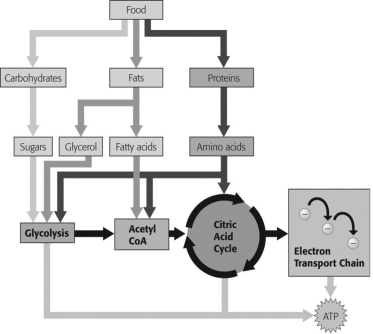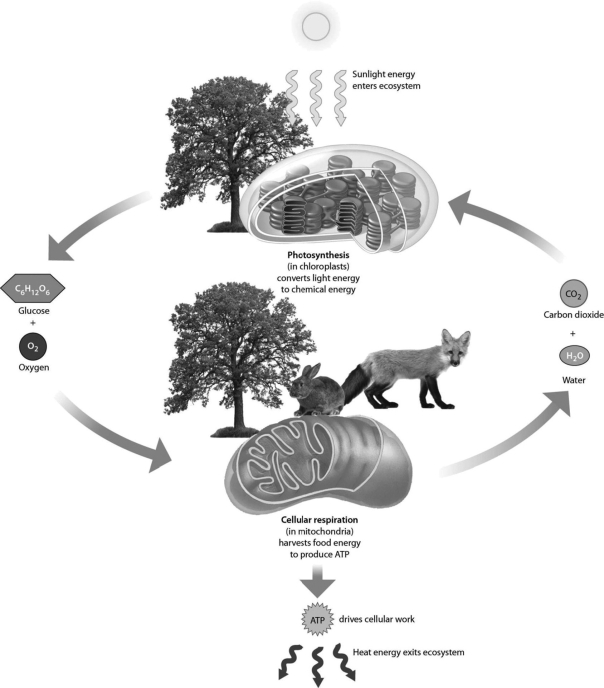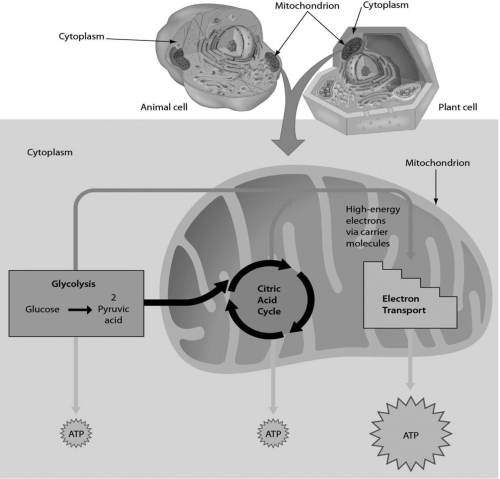A) ATP
B) oxygen
C) lactic acid
D) NAD+
Correct Answer

verified
Correct Answer
verified
Multiple Choice
Respiration describes the exchange of gases between your blood and the air. Cellular respiration ________.
A) produces ATP
B) produces oxygen
C) produces glucose
Correct Answer

verified
Correct Answer
verified
Multiple Choice
Some friends are trying to make wine in their basement. They've added yeast to a sweet grape juice mixture and have allowed the yeast to grow. After several days, they find that sugar levels in the grape juice have dropped, but there's no alcohol in the mixture. The most likely explanation is that ________.
A) the mixture needs more sugar; yeast need a lot of energy before they can begin to produce alcohol
B) the mixture needs less oxygen; yeast only produce alcohol in the absence of oxygen
C) the mixture needs more oxygen; yeast need oxygen to break down sugar to produce alcohol
D) the mixture needs less sugar; high sugar concentrations stimulate cellular respiration, and alcohol is not a by-product of cellular respiration
Correct Answer

verified
Correct Answer
verified
Multiple Choice
A physician is examining a patient who fatigues easily after walking only a short distance. Tissue examination reveals that certain skeletal muscle cells are missing mitochondria. Laboratory tests are likely also to find ________.
A) the muscles contain large amounts of lactic acid following even mild physical exercise
B) the muscles contain large amounts of carbon dioxide following even mild physical exercise
C) the muscles require extremely high levels of oxygen to function
D) the muscle cells cannot split glucose to pyruvic acid
Correct Answer

verified
Correct Answer
verified
Multiple Choice
ATP synthase plays a role in ________.
A) pulling electrons down the electron transport chain
B) glycolysis
C) pumping hydrogen ions across the inner mitochondrial membrane
D) generating ATP
Correct Answer

verified
Correct Answer
verified
Multiple Choice
Which molecule shown in the figure below does NOT begin cellular respiration in the cytoplasm? 
A) amino acids
B) fatty acids
C) glucose
D) glycerol
Correct Answer

verified
Correct Answer
verified
Multiple Choice
Scenario
Poultry scientists recorded data to help maximize farmers' yields. They collected data about when in the life of eggs were laid by hens, how many eggs were laid by each hen in a particular age range, the weight of those eggs and the weight of the chicks that eventually hatched from those eggs. Examine the data table to answer the following questions
Egg and Chick Weight from Hens of Different Ages

 -If an egg were weighed halfway between being laid and hatching, how would you expect that weight to compare to the weight of the newly laid egg?
-If an egg were weighed halfway between being laid and hatching, how would you expect that weight to compare to the weight of the newly laid egg?
A) The egg would weigh more at this midpoint than when laid because, during development, the chick makes new cells.
B) The egg would weigh more at this midpoint than when laid because it is taking in oxygen.
C) The egg would weigh less at this midpoint than when laid because the shell wears away over time.
D) The egg would weigh less at this midpoint than when laid because some of the mass of the egg would be released through cell respiration.
Correct Answer

verified
Correct Answer
verified
Multiple Choice
Choose the equation that describes aerobic cellular respiration most accurately.
A) glucose → lactic acid + energy
B) energy + carbon dioxide + water → glucose + oxygen + water
C) glucose + oxygen → carbon dioxide + water + energy
D) energy + glucose → water + carbon dioxide
Correct Answer

verified
Correct Answer
verified
Multiple Choice
A horse eating some hay is an example of ________.
A) an autotroph eating a producer
B) an autotroph eating a consumer
C) a consumer eating a producer
D) a consumer eating a heterotroph
Correct Answer

verified
Correct Answer
verified
Multiple Choice
Conclusions drawn from muscle contraction experiments conducted by A.V. Hill
A) demonstrated that human muscles work the same as frog muscles.
B) have been shown to be faulty according to more recent evidence.
C) demonstrate a flaw in the process of science because the conclusions were wrong.
D) were based on poorly designed experiments without a control.
Correct Answer

verified
Correct Answer
verified
Multiple Choice
Scenario An abundant and continual supply of ATP is necessary for all living cells. Toxins, reduced blood flow, and a compromised respiratory system can interfere with the transport of oxygen to active cells. A runner in a marathon faces multiple obstacles to continue to produce sufficient ATP to remain competitive. -When the circulatory system cannot deliver oxygen fast enough to support a runner's aerobic metabolism, cells switch to an emergency mode in which ________.
A) ATP is generated less efficiently by harvesting the heat energy in a cell
B) ATP is inefficiently produced and lactic acid is generated as a by-product
C) lactic acid is broken down to produce smaller amounts of ATP
D) carbon dioxide is joined with water to generate much smaller amounts of ATP
Correct Answer

verified
Correct Answer
verified
Multiple Choice
What waste product do yeast produce under anaerobic conditions?
A) ethyl alcohol
B) pyruvic acid
C) lactic acid
D) creatine
Correct Answer

verified
Correct Answer
verified
Multiple Choice
The first electron acceptor of cellular respiration is ________.
A) CO2
B) O2
C) NAD+
D) H2O
Correct Answer

verified
Correct Answer
verified
Multiple Choice
Human muscle cells use lactic acid fermentation to ________.
A) produce more ATP than is possible through complete aerobic respiration
B) produce ATP using the electron transport chain
C) regenerate NADH
D) produce ATP without O2
Correct Answer

verified
Correct Answer
verified
Multiple Choice
The waste products of cellular respiration include ________.
A) water only
B) carbon dioxide only
C) water and carbon dioxide
D) water and glucose
Correct Answer

verified
Correct Answer
verified
Multiple Choice
Plants use photosynthesis to ________.
A) store chemical energy, and they use cellular respiration to harvest energy from organic molecules
B) change light energy into chemical energy as well as to harvest chemical energy
C) harvest energy from organic molecules, and they use cellular respiration to store chemical energy
D) turn light energy into sugars
Correct Answer

verified
Correct Answer
verified
Multiple Choice
A product of glycolysis is ________.
A) lactic acid
B) ethyl alcohol
C) O2
D) pyruvic acid
Correct Answer

verified
Correct Answer
verified
Multiple Choice
Where in the cell does glycolysis occur?
A) cytoplasm
B) endoplasmic reticulum
C) within the fluid just inside the inner mitochondrial membrane
D) between the inner and outer mitochondrial membrane
Correct Answer

verified
Correct Answer
verified
Multiple Choice
 -Examine the figure above. Which reactant(s) primarily come(s) from the air?
-Examine the figure above. Which reactant(s) primarily come(s) from the air?
A) water
B) glucose
C) carbon dioxide
D) oxygen and carbon dioxide
Correct Answer

verified
Correct Answer
verified
Multiple Choice
 -Examine the figure. Which of these stages receive input from more than one other stage?
-Examine the figure. Which of these stages receive input from more than one other stage?
A) glycolysis
B) citric acid cycle
C) electron transport
Correct Answer

verified
Correct Answer
verified
Showing 21 - 40 of 53
Related Exams